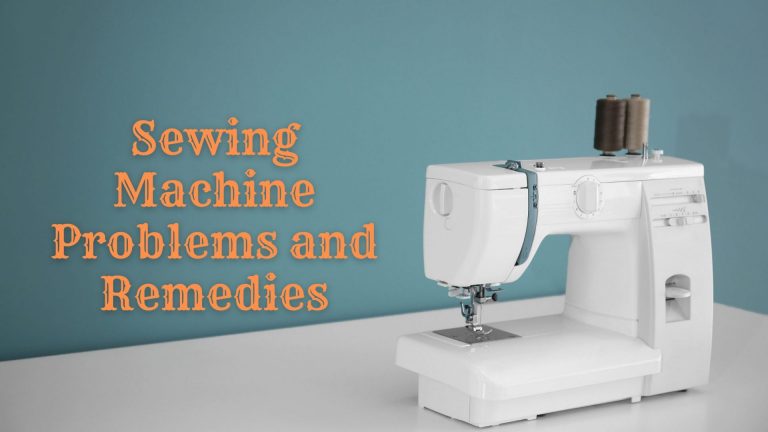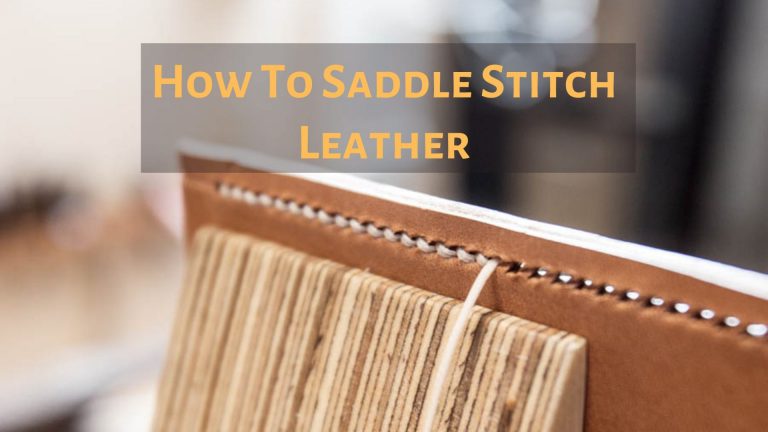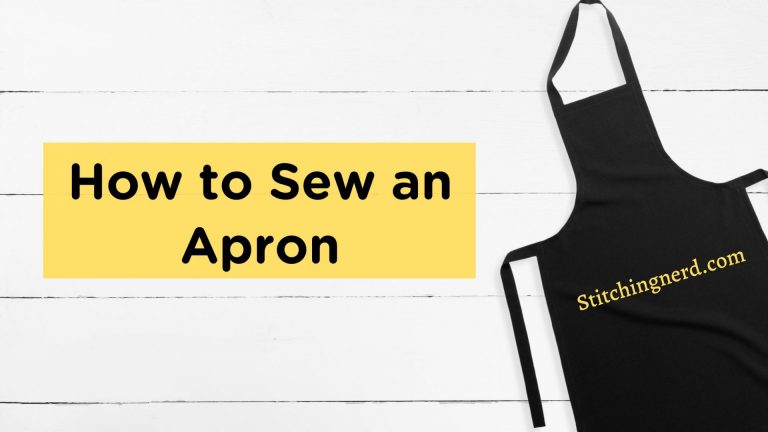Why Does My Sewing Machine Keep Jamming [Causes+Solutions]
Collect all the fabric, threads, needles, and other materials you’ll need for a fantastic creation. You’re looking forward to sitting down at the sewing machine but nothing occurs when you push down on the foot pedal except a whirling sound. Most of the time this happened when you’re trying to sew any thick or heavy fabric.
This is why it is critical for you to figure out what is the cause of jamming in the first place. So you can do it all to prevent it from happening again. Before tossing your machine out the window continue to read our guide where we address this problem.
Before diving into the main article must have a look at our top recommendations for the best kid’s sewing machines, the best manual leather sewing machines, and the best heavy-duty handheld sewing machine.
TIME: 20 Mins SKILL LEVEL: Intermediate
How do You Fix a Sewing Machine that Keeps Jamming
Reasons and Remedies
1. Regardless of how sure you are that the device’s problem is caused by a giant jumbled mess of threads in the bobbin beneath the cloth, the most typical cause of jamming is a shortage of tension in the top thread. So the absence of tension in the thread might be the common cause of your jammed machine. Because of the inadequate tension needed to pull the thread through the cloth you are stitching, this basic problem will cause the equipment to jam. To fix this problem, simply lift the presser foot and thread your needle again according to the assembly specifications.
2. The feed dog’s primary function is to ensure that the fabric moves smoothly backward and forward. The feed dog can become trapped in reverse, causing your sewing machine to jam after a few stitches. This will lead the machine only to stitch backward. If this is the situation, tinkering with your machine configurations won’t help; you’ll need professional help.
3. Lint or particles in the feed dog area can jam up the processes, making it impossible for them to move. The jam can be unclogged by washing out the lint and dust particles. Then, to ensure that the feed dog can clamp the fabric, ensure that it is elevated.
4. Your sewing machine will frequently become jammed because of a bent or cracked needle that prevents the thread from passing through the cloth. For this, stop working and investigate your needle for any disfigurements or breakage. Switch to a new one if necessary. Make sure to use the correct needle or change the needle before sewing for your device. For this, you can also read how to change a machine needle.
5. Do not overlook the condition of the thread you use for your sewing tasks, since the low-quality thread can create a variety of issues both for your equipment and your product. Lower-quality threads can enable lint to shred, which will get lodged in the gears of your machine and lead it to jam. The remedy is to make sure you’re getting some high-quality thread that matches the company’s recommendations. It may be more expensive than the lesser quality thread, but it will guarantee that your work is flawless and that your machine runs smoothly as you concentrate on your next task.
Now, we will get into the stitching and jamming dynamics of some popular models from well-known sewing machine brands like Singer and Brother.
Singer Sewing Machine Keeps jamming
The Singer has been popular for producing the best quality industrial sewing machines, but as with any other regular device, singer machines also tend to get stuck at some point or the other. Here are some of the reasons behind singer sewing machine locks or jamming and potential solutions for the issues.
1. The motor in most Singer sewing machines occasionally refuses to start or abruptly stops functioning, resulting in the fabric getting stuck in the machine. The issue could be caused by a defective motor. A defective motor is usually caused by problems with the drive belt or electrical components. You will notice broken or loosened wires in between the motor and the foot pedals that must be repaired if you look attentively. To resolve this issue, disconnect the sewing machine from the power supply and inspect the motor belt for any damaged or loose parts before replacing it.
2. Check the cables that connect the engine to the foot pedal second. If your motor brake continues to make this whirring sound but does not operate, it is likely that your motor belt is just too stiff. Before washing and lubricating the motor belt, start turning the handwheel. It’ll aid in removing dust and lint from your driving gears. Now that the motor has eased up a bit, it should operate smoothly, allowing you to work without becoming stuck.
3. There have been a few cases where the thread breaks exactly when you place your foot on the pedal to commence sewing on many Singer machines. When you’re attempting to stitch anything quickly, having the thread snap time after time is quite annoying.
4. Jamming could be attributed to poor threading problems. You’ll need to rethread the device’s top thread to fix this problem. The machine is unable to work because of the impediment. For example, the laser line or spool’s threads may be held incorrectly, making it impossible to move.
5. Choose needles with bigger eye sizes. When working with little needles, the threads can snap at times. The small needle eyes will continue to break as the thread pressure changes owing to the machine’s motion.
Beginners frequently encounter this issue, in which the machine refuses to take in the material easily, resulting in the machine becoming jammed. You need not be concerned if the equipment stops sewing and neglects the fabric.
Lift and adjust the dog feeds to an appropriate height before sewing again to resolve this issue. If you routinely sew buttonholes, you can leave stitch lengths at zero instead of altering them to two or three. If the last project involved quilting, lift the feed dogs a few inches above the plate and restart to avoid jamming.
Brother Sewing Machine Keeps Jamming
Our favorite budget-friendly tool is the Brother CS6000i, which is strongly recommended by specialists to all sewing lovers. However, every good machine has a few flaws, so if your Brother sewing machine is causing thread jams, here’s how to solve it.
1. It’s possible that the top thread isn’t connected properly if your thread bunches as you stitch. As a result, unthread it and start over. To prevent jamming your machine while threading it, you must take several steps to draw the thread through.
2. Your machine will offer helpful diagrams with figures indicating the processes’ order. At each stage, there should be indicators suggesting which way you really have to advance the thread.
3. If you don’t elevate the presser foot, the pressure discs will shut, and your thread will get caught between them. Secondly, rotate the handwheel to ensure that the needle and thread turn lever is upwards and the threaded line indicator is pointing up to prevent clogging.
4. Ensure that you’ve wrapped your thread through the upper thread guideline and the tension plates, after loading your thread spool on the spindles from the rear. Your machine will most likely cease jamming and produce seamless strokes once you’ve completed all these instructions.
5. If your main thread is properly threaded, the bobbin will be the next place to inspect. First, make sure that the thread is properly coiled onto the bobbin. This could pose problems if you didn’t wrap it properly all around the bobbin thread tension disc when wrapping. Check that the bobbin case is in its container and that the shuttle is in the proper position. Markers should indicate the orientation of the shuttles and bobbin casing.
6. In addition, the bobbin must be placed in the bobbin case the correct way around. Such that, the thread should exit the bobbin in the opposite direction. Ensure that the thread is wrapped through the tension spring on the case, which is easy to overlook.
Wrapping Up!
To sum it up, you have to invest not only in the machine but in the maintenance of the machine as well. Using good quality threads and mineral oils recommended by the manufacturers is the ultimate key. These problems appear commonly among those who use their sewing machine regularly.
It may not be every detail, but we made sure to give you a basic idea of why the sewing machine keeps jamming. These troubleshoots will help to tackle the jamming situation ASAP.
By following all the above-mentioned troubleshoot remedies, you can have the best sewing experience possible and can complete your projects within the nick of time, without jamming and blocking the machine.


![3 Easy Steps to Sew Canvas by Hand [Complete Guide]](https://stitchingnerd.com/wp-content/uploads/2021/12/How-to-Sew-Canvas-by-Hand-1-1-768x432.jpg)

![Can You Iron On Patches to Leather? [Find Out]](https://stitchingnerd.com/wp-content/uploads/2021/11/Can-You-Iron-On-Patches-to-Leather-768x432.jpg)


